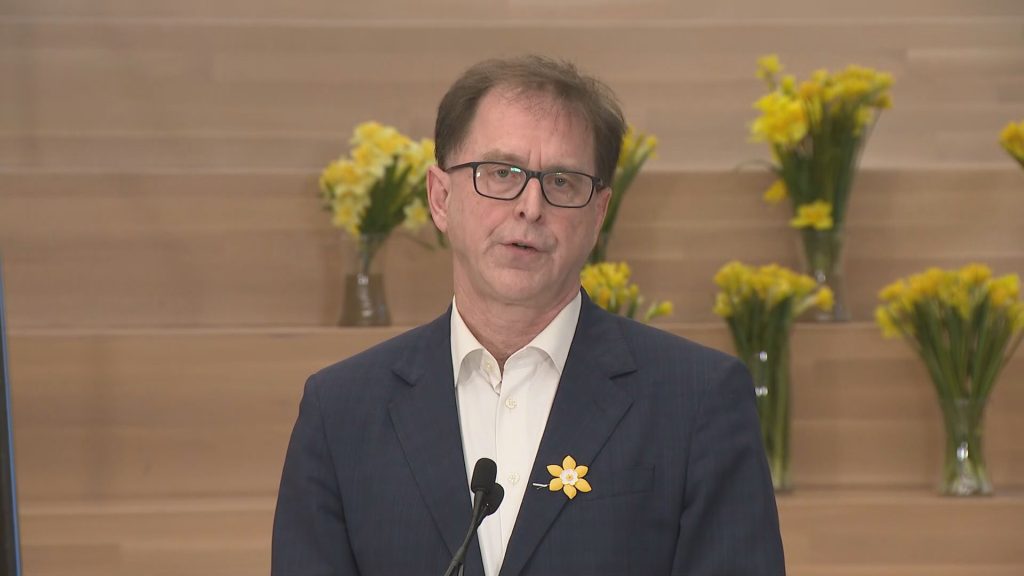B.C. sees increase in family doctors in first year of new payment model: Dix

Posted February 9, 2024 7:51 am.
Last Updated February 9, 2024 6:20 pm.
The B.C. government is touting its work in keeping and increasing the number of family doctors in the province.
Health Minister Adrian Dix says B.C. now has the highest number of family physicians per capita in Canada.
In an update Friday about access to primary care, Dix said more than 4,000 physicians have signed up since the province’s new family doctor payment model was launched a year ago. As of December 2023, there were about 5,000 doctors “working in longitudinal primary care,” he added.
The Longitudinal Family Practice Payment Model was launched February 1, 2023, to address inequalities in compensation, with full-time doctors seeing their annual salary go up from an average of $250,000 to $385,000. The province says more than 4,000 family doctors signed up in the first year.
“We are seeing new doctors start up family practices,” said Dr. Ahmer Karimuddin, president of Doctors of BC. “We are seeing doctors who left their practices years ago return to longitudinal family practice or even delaying their retirement to remain available to the patients that are out there.”
That, Dix noted, amounts to an increase of 16.5 per cent from December 2022. He says there has also been an increase in nurse practitioners working in the community, with 11.3 per cent more
Addressing health-care concerns has been a challenge, particularly after the pandemic, which put even more of a spotlight on the shortage of family doctors and other health professionals.
As of last summer, nearly one-in-five British Columbians didn’t have access to a family doctor.
“Historically, we didn’t have a list of who is attached and who wasn’t, which made it very difficult for people trying to access the system … So what we’ve done and what we built out, and the very significant number of doctors have now taken part of it, is uploading the patient data, the patients who are attached to a family doctor or a nurse practitioner, to a provincial attachment system,” Dix explained.
“This allows us to know who’s attached who may have room to attach more in the system. And then we’re combining it on the other side with the Health Connect registry, where patients are requesting to be attached effectively and to get access to a family doctor.”
He says thousands of family doctors and nurse practitioners have uploaded data as of Jan. 31, 2024. All family doctors and nurse practitioners are being asked to do the same by March 31.
“Five-hundred-and-ninety-four providers have indicated they can accept new patients for a collective maximum total of 114,000 new patients. In addition to that, under the ongoing work that we’re doing with the Health Connect registry, above 60,000 — through the Health Connect registry — patients have been attached to a family doctor and the remaining group that has not been attached yet … is about 220,000,” added Dix.
However, the number of British Columbians who are still waiting for a family doctor is far higher than that, the health minister admits.
“The number is under 900,000 now in the Canadian Community Health Survey, and that data comes out once a year, and there are fewer people waiting for a family doctor now than when I started,” he said.
Dix says there is “significant hope” ahead, though he understands “how stressful it is for some people to be without a family doctor.”
He encourages those without a doctor to sign up with the province’s Health Connect Registry, which matches people with doctors accepting new patients. Dix says more than 220,000 are currently on that list, waiting to be connected.
In December of 2022, doctors ratified a $708-million deal with the province.
We’ll have all you need to know from the update on-air and online. You can also watch our 24/7 livestream for the latest.








